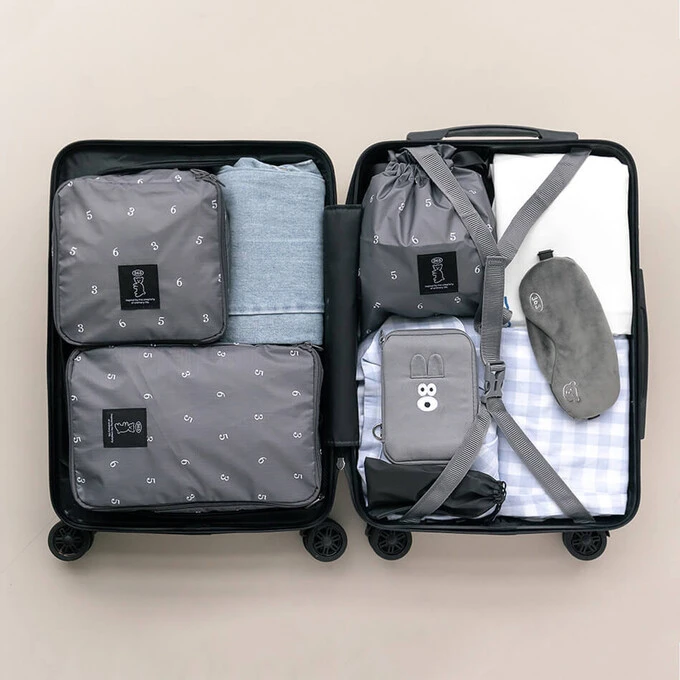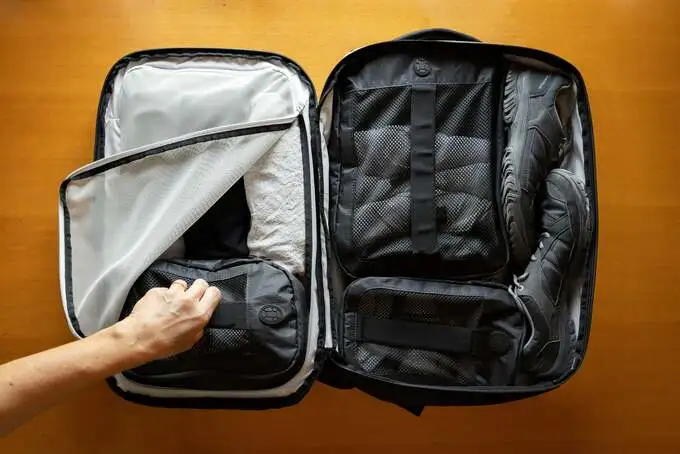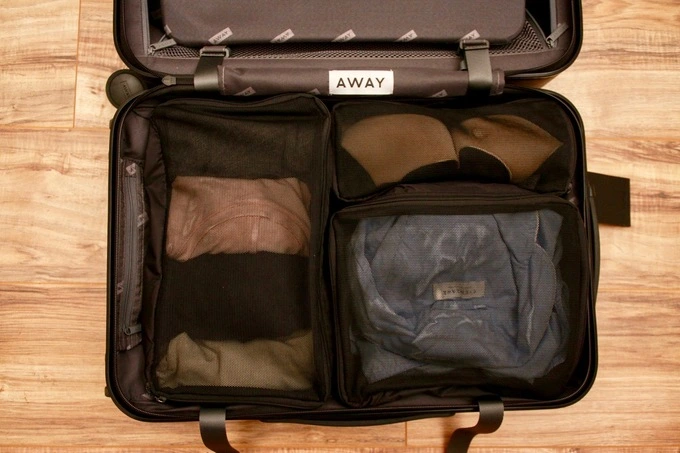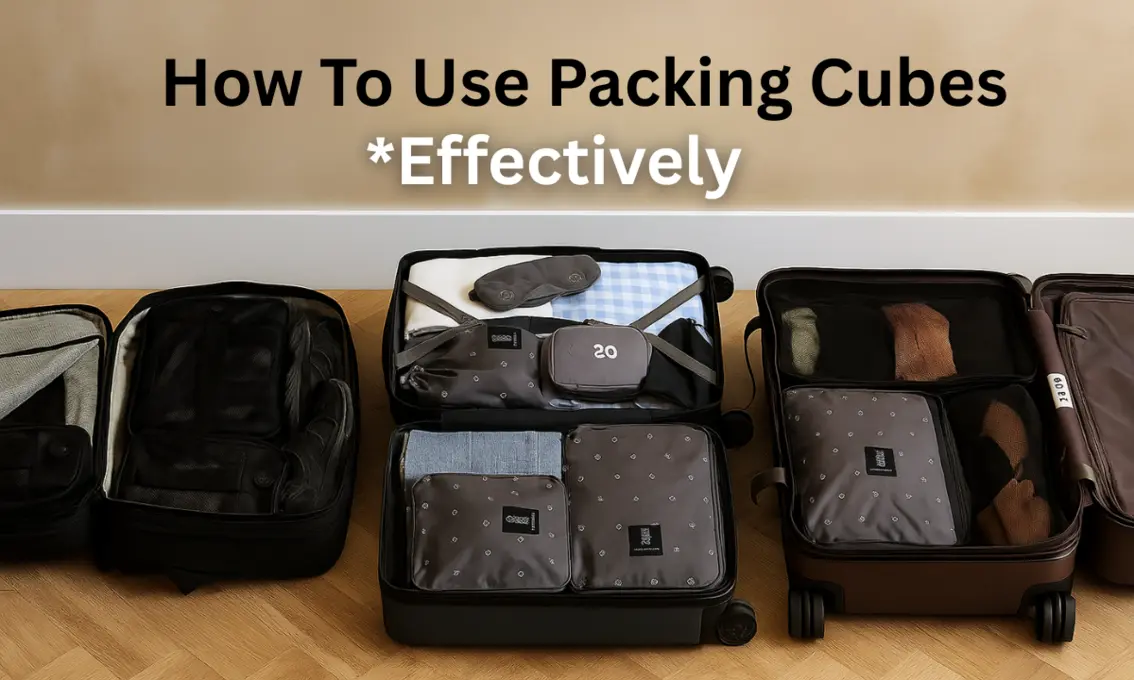I will never forget the first time I learned about packing cubes on a long trip. My suitcase was a mess of tumbling clothes, and I was desperate to zip it shut. An experienced traveler I met on the trip told me about packing cubes. Skeptical but intrigued, I gave them a try, and immediately felt like I’d unlocked a new level of packing.
What once took frantic shoves became a simple “Tetris” puzzle: I could organize everything by category and fit more into the same space. This method increased my organization and maximized my luggage room. Over years of travel and trial-and-error, I’ve refined exactly how to use packing cubes effectively, and I’m excited to share the tricks I’ve picked up along the way.
What Are Packing Cubes?
In simple terms, packing cubes are zippered cloth containers for your luggage. Think of them as lightweight organizers that hold and separate your belongings. They usually come in sets of various sizes. A typical set might include a large cube for bulky items like sweaters, a medium for shirts or pants, a small for underwear and socks, and even tiny ones for electronics or toiletries.
Many have mesh tops or transparent panels so you can see inside without unzipping them. When using them, you just pack clothes into each pouch, zip it up, and then pack the pouches themselves into your suitcase or backpack.

Why Use Packing Cubes? (Benefits)
Using packing cubes offers several big advantages.
First, they force you to organize your packing from the start. Instead of one big rumpled bag, everything has its own compartment. An experienced blogger points out that the “biggest pro” of packing cubes is the “outrageous amount of organization” they allow. When I need an item, I no longer fumble through layers of clothing, I know exactly which cube it’s in. Need a T-shirt on day two? I reach for the top of the shirt cube. Need socks? They’re all in the small cube. This cuts stress dramatically, especially after a long flight or when you’re in a hurry.
Second, cubes maximize space. By compressing items and neatly stacking the cubes, you often fit more into the same luggage. It’s like playing Tetris each time you pack. I’ve personally fit an extra pair of shoes or tucked in a jacket that wouldn’t have squeezed in otherwise. Using cubes can even make carry-on packing possible for longer trips, one traveler discovered she could get 10 days worth of clothes into a carry-on by smart cube use.
Other benefits include keeping clean and dirty clothes separate. Some cubes even come split in half for clean vs. dirty laundry. I usually designate one cube as my laundry sack on the return flight (simply unzip and drop all dirty garments in). This means when I get home, I literally take that cube to the wash without touching anything else.
Packing cubes also protect delicate items. By isolating shoes, toiletries, or electronics in their own cubes, you prevent spills and scuffs from spreading to your clothing. In fact, one article notes you can treat a packing cube like a shoe bag or a waterproof pouch for swimwear. In short, packing cubes keep things neat, give you extra space, and simplify the whole travel experience.
How Do They Work?
Unlike vacuum bags that need a pump, packing cubes use compression zippers or a snug fit to minimize space. For example, some cubes have a double zipper, you zip once to enclose your items, and zip again to compress them and push out extra air. This can literally give you “extra real estate” in your bag.
In this way, packing cubes function as both organizers and mini-compressors, molding their shape to the contents. When I pack a cube full of clothes and zip it tight, it holds everything in place so it takes up less room and keeps its shape. Also, because each cube is a contained package, the shifting of clothes during travel is greatly reduced, which means fewer wrinkles and a tidier suitcase.
One neat feature is color-coding or labeling cubes. I usually use differently colored cubes so I instantly know what’s inside each one (if they all have the same sizes). For example, all my blue cubes might be jeans and pants, a red one for shirts, and a green one for socks and underwear.
Pro Family Tip: If you have children I suggest using one cube per child and making them different colors to avoid mix-ups. This visual system turns packing into a quick and almost playful process. I can glance at my bag and think, “Blue cube = pants,” rather than wrestling with unlabeled piles of clothing.
How to Pack with Packing Cubes
Packing with cubes is straightforward once you get the hang of it. I usually follow these steps, though your routine can vary:
First, plan your wardrobe and pick outfits or categories. I often lay clothes on the bed sorted by type: tops, bottoms, underwear, etc. I edit ruthlessly at this stage, remember, cubes encourage you to take only versatile pieces. Then I designate cubes: one for shirts, one for pants, one for underwear/socks, etc. For mixing-and-matching outfits, some travelers suggest grouping outfits together so you just grab a cube per day. I tried that, but I prefer grouping by type and coordinating colors, which helps me mix outfits without duplicates.
Next, pack each cube. There’s a fun debate about rolling vs. folding. The truth is, you should use whichever method works best for each item. I roll softer, wrinkle-resistant clothes (like yoga pants or tees) and fold stiffer ones (like collared shirts or denim). If in doubt, a tightly rolled pair of jeans can actually compress more than folded. One expert even ties a belt around a rolled cube to keep it firm. In practice, I put a small cube with socks and underwear first (they compress super easily), then medium cubes with stacked shirts, and large cubes with jeans or a lightweight jacket on top. I never cram the cubes to the brim; leaving them a little pliable helps seat them into my bag better and makes unzipping easier.

After the cubes are packed, it’s time to arrange them in your luggage. This is like playing a puzzle. I start by placing the largest cubes first, usually at the bottom of the suitcase or at the back of a backpack.
If you’re packing a carry-on, this might mean laying one large cube flat and another on its side. I follow the advice to put the widest cube down and smaller cubes around it. This often leaves some gaps, which I fill with odd items: a toiletry bag, shoes, or loose accessories like chargers. Always make sure the cube zippers are oriented upward (or towards the opening) so when the suitcase is closed, you can unzip them easily without repositioning.
Finally, I tuck in any remaining loose items. I often leave one small cube empty or partially empty. This turns out to be great for last-minute shopping souvenirs on the return trip. And remember to use the included laundry cube or one small cube for dirty clothes as you go; it saves a ton of re-packing later. When I’m done, closing the bag feels easy, no fighting with bulges. Seeing the cubes line up neatly inside makes me confident I packed efficiently.
What Not to Do & Not to Pack:
To use packing cubes in a backpack I even suggest measuring your backpack first to choose cubes that will fit snugly. In my experience, small and medium cubes are best for most backpacks; large cubes often go unused unless it’s a very big pack. This makes unpacking at a hostel or on the plane hassle-free.
For carry-on luggage, the strategy is similar to checked luggage, but with an eye on weight and size. Use lighter cubes (some are so lightweight they barely weigh anything) and keep liquids or heavy items in the smallest cubes to balance the load. Packing cubes can be a travel hack that makes a carry-on feel like a magic bag, you end up neatly fitting more outfits (especially when using compression cubes) and find everything easily at security checks or on short trips.

Over time, I have also learned what not to pack in cubes. Very bulky or oddly shaped items (like a hair straightener or a camera) sometimes go better outside, wedged between cubes, or in a side pocket, as the Briggs & Riley team advises. This way I don’t fight the cube zipper. In short: use cubes for soft, even items (clothes, linens, shoes in shoe-cubes if available) and use empty spaces and pockets for hard or awkward things.
Packing Cube Hacks and Pro Tips:
Once you master the basics, there are dozens of creative packing cube hacks to try:
- Outfit Cubes. Instead of sorting by item type, some travelers pack cubes by outfit. Lay out each day’s outfit head-to-toe, fold or roll it together, and put it in one cube. This way you literally unpack one cube per day and you’re ready to dress. I find this useful on family trips: each kid’s daily clothes go in one cube so mornings are fast.
- Laundry Bag Cube. Keep one cube empty or designate a cube for dirty clothes as you travel. When it’s time to go home, just seal that cube and it becomes a laundry bag. Dropping it into the wash at home becomes blissfully simple.
- Mix-n-Match Categories. If you prefer variety, pack “tops cube” and “bottoms cube” instead of matching sets. Then you can swap pieces. One tip I love from an organizer: pack solid-colored basics in one cube and colorful shirts/skirts in another, so you can mix and match any pair.
- Use One for Miscellany. Small cubes aren’t just for socks! Use a tiny cube for electronics (chargers, cables, power banks) or toiletries so that even random items are contained. My favorite is a mesh cube for dirty swimwear or shoes.
- Compression Tip. If you have compression cubes (two-zipper style), don’t overstuff them at first. Instead, pack them about 90% full, zip shut, and then compress the second zipper. They’ll shrink down and give you extra wiggle room. I keep a couple of non-compression cubes for everyday clothes and save a compression cube for bulky sweaters or winter gear.
- Label Your Cubes. If cubes are opaque or you just want an extra edge, label them. I use small paper tags or just write on masking tape on the cube’s fabric. This saved me when I travel with larger groups – no confusion who packed what.
- Cube as Pillow/Pouch. When traveling, a tightly packed cube (clothes inside) can double as a pillow under your head, or as a padded case for delicate souvenirs.
- Peek Inside. Always choose cubes with mesh or see-through tops if possible. It’s a minor thing, but being able to glance and see a pair of socks or shirt color under the mesh is a huge time-saver.
These hacks might seem small, but they add up. For example, on a recent trip I left the house with two empty cubes inside my luggage. By the end, they held souvenirs and laundry. I only had to carry home exactly what I intended, nothing more.
Choosing the Right Packing Cubes:
Not all cubes are created equal, and picking the right set can make a difference. Cubes vary by size, shape, and material. Generally, look for a mix of small, medium, and large sizes. Small cubes are perfect for socks, underwear, or small electronics. Mediums can hold a day’s outfit, and larges can fit jackets, bulkier pants, or towels.
Materials matter too. Many cubes are made of nylon or polyester, often with a mesh panel. The mesh top is a handy feature: you can see what’s inside at a glance, which is great for quick previews. Other cubes use lightweight ripstop fabrics or even recycled materials, which I prefer for carry-on weight concerns.
Also consider water-resistant or antimicrobial cubes if you pack wet swimwear or want extra protection. Personally, I look for cubes that have a sturdy zipper and fabric. The last thing I want is a seam splitting open mid-trip.
Conclusion:
Packing cubes might seem like a small accessory, but they can transform your travel. When I finally packed my gear in cubes, I realized I’d stopped worrying about lost items or wasted space. I could focus on enjoying the trip itself. Whether you’re stuffing a carry-on for a quick trip or heading around the world with just a backpack, these simple fabric cubes become your secret weapon.
They keep your belongings tidy, accessible, and in top shape. By using them the way I’ve described, categorizing, using the right sizes, stacking strategically, and employing a few fun hacks, you’ll learn how to use packing cubes effectively and wonder how you ever traveled without them.

